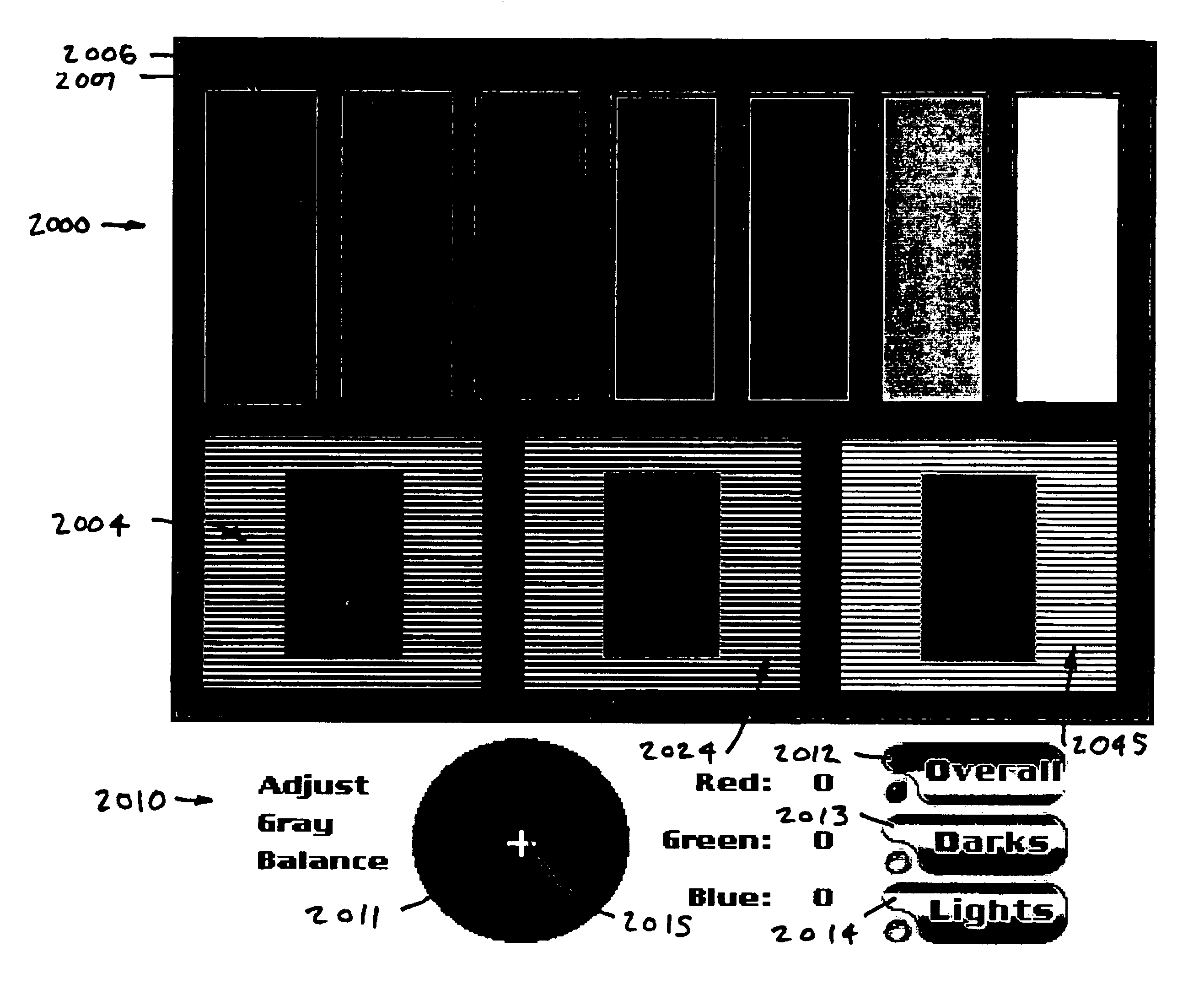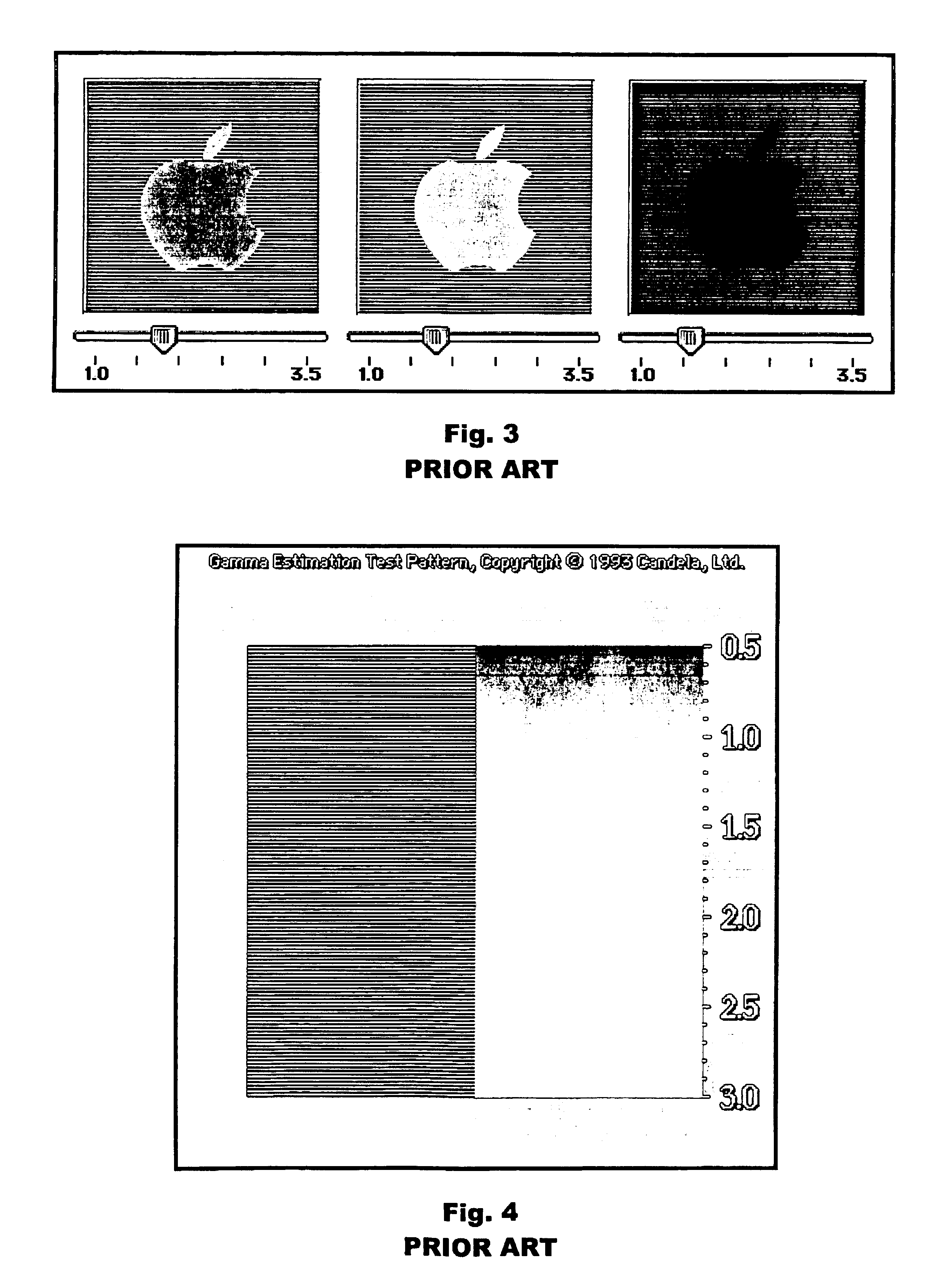Visual calibration target set method
a technology of target set and calibration method, which is applied in the field of calibration of computer monitor displays, can solve the problems of ineffective reliable tone calibration of crt displays, limited methods that can verify the actual tonality, etc., and achieve high-quality display calibration and high quality
- Summary
- Abstract
- Description
- Claims
- Application Information
AI Technical Summary
Benefits of technology
Problems solved by technology
Method used
Image
Examples
second embodiment
[0211]A second preferred embodiment of the gray balance features of the present invention is referred to as the Gray Balance Method Two, Increased Precision target 2300 (see FIGS. 23, 24 and 25). This target is optimized for displays that do not suffer seriously from an inability to display individual white pixels surrounded in the same horizontal row by black pixels with predictable luminosity, which may be much the same as that luminosity produced when the same white pixel is surrounded by white pixels. Flat panel displays may be inherently more capable of this than are CRTs. This second embodiment is also useful for increased gray balance precision on CRTs, despite their potential inability to display pixels that are unaffected by the surrounding pixels within a given horizontal row of pixels (scan line).
[0212]The light or quartertone sub-target 2304 comprises a light or quartertone solid 2307 adjacent to a blended region 2306 having a mixture of midtone pixels and light (prefera...
first embodiment
[0219]Once the midtone sub-target 2303 has been used to match the color of its gray midtone solid 2309 to the hue and chroma of the white, the combination of white and midtone colors used in sub-target 2304 then makes it possible to achieve enhanced accuracy for the light quartertone solid 2307 gray balancing. The values chosen for the quartertone sub target 2045 of the Gray Balance Method Two (FIG. 9) allow the quartertone sub-target 2045 of FIG. 9 to be to make quartertone adjustments prior to accurate adjustment of the midtone sub-target 2024, but these chosen values also assume relative freedom from color crossovers in the light end of the uncalibrated tone scale of the display. This freedom from crossovers is typical of CRTs but less typical of flat panel displays, which usually do suffer considerable color crossovers in the lighter portion of their uncalibrated tone scale.
[0220]Note that the Gray Balance Method Two and Gray Balance Method One targets of the present invention c...
PUM
 Login to View More
Login to View More Abstract
Description
Claims
Application Information
 Login to View More
Login to View More - R&D
- Intellectual Property
- Life Sciences
- Materials
- Tech Scout
- Unparalleled Data Quality
- Higher Quality Content
- 60% Fewer Hallucinations
Browse by: Latest US Patents, China's latest patents, Technical Efficacy Thesaurus, Application Domain, Technology Topic, Popular Technical Reports.
© 2025 PatSnap. All rights reserved.Legal|Privacy policy|Modern Slavery Act Transparency Statement|Sitemap|About US| Contact US: help@patsnap.com



